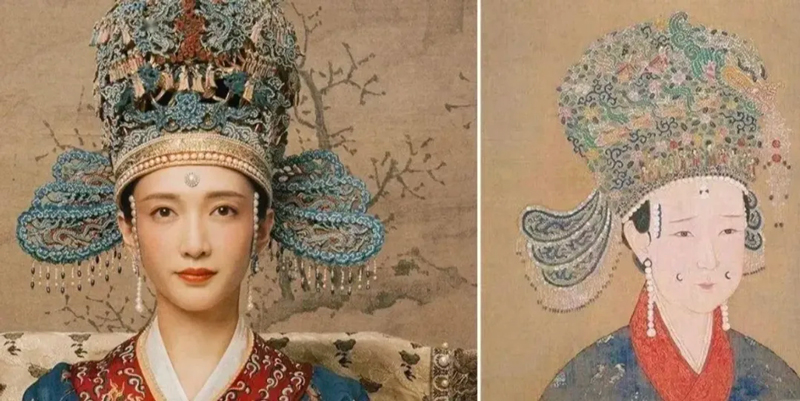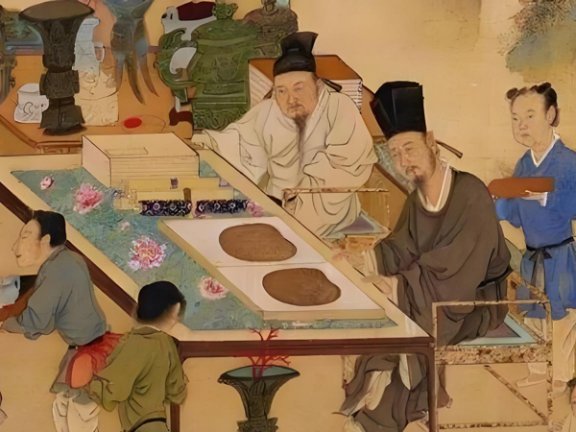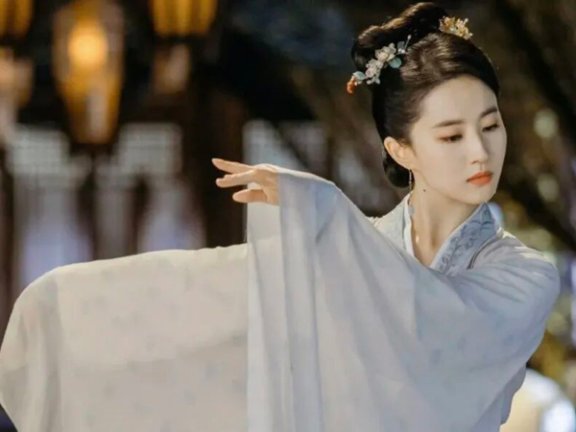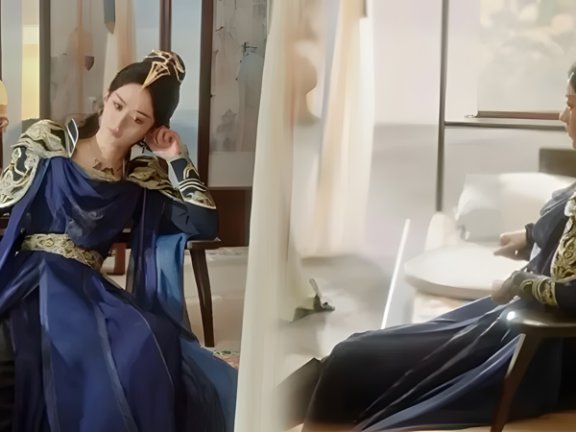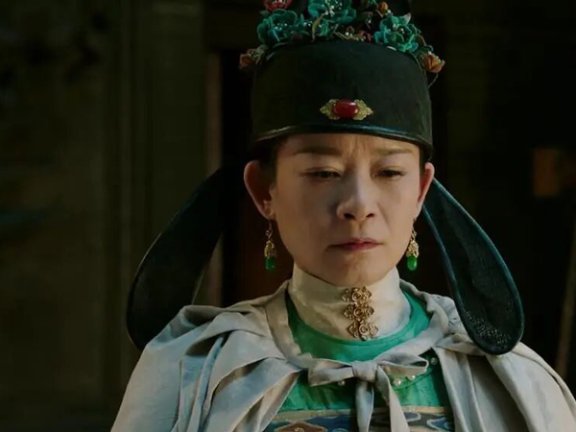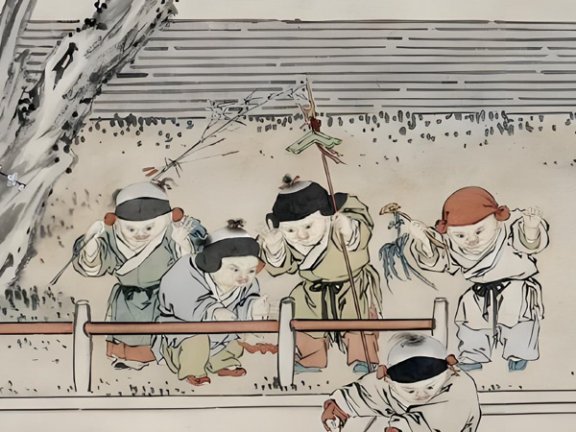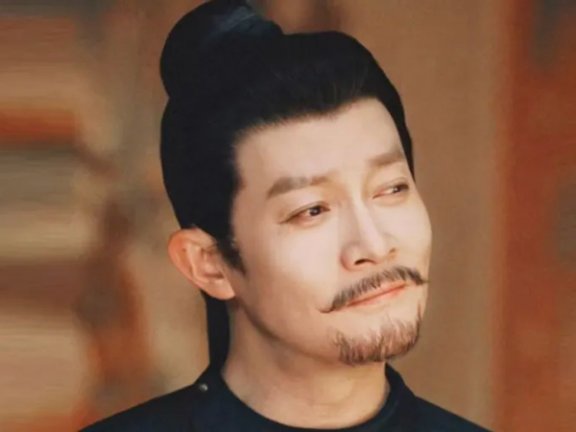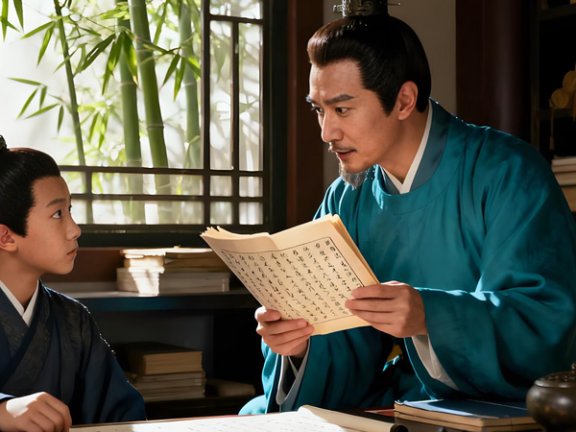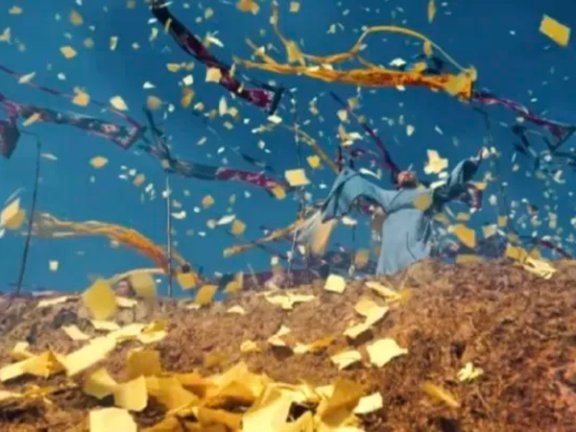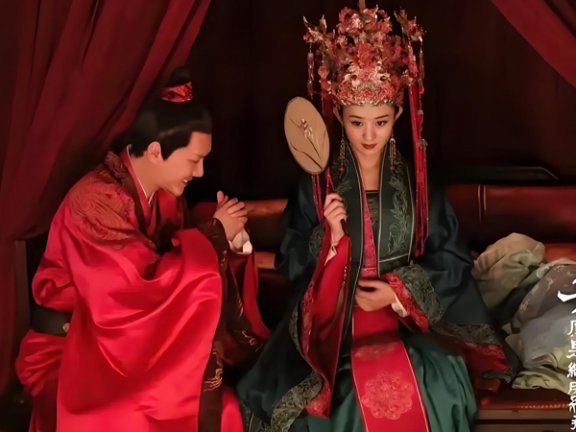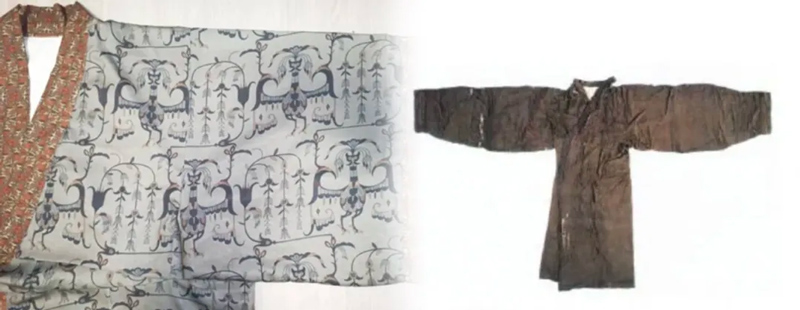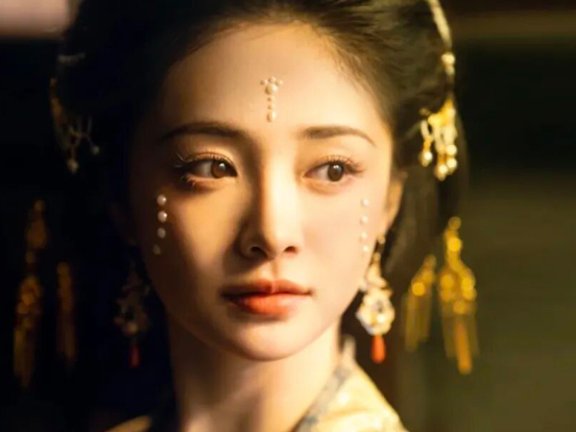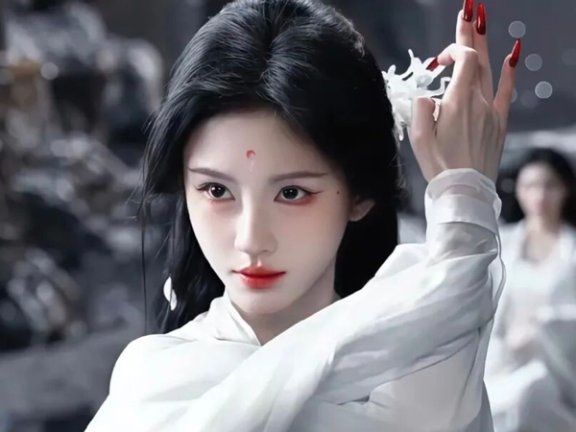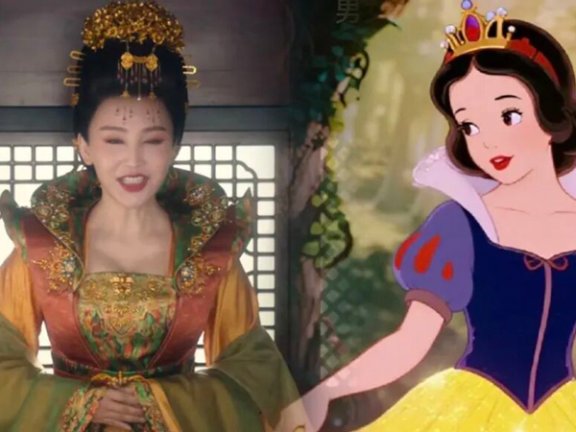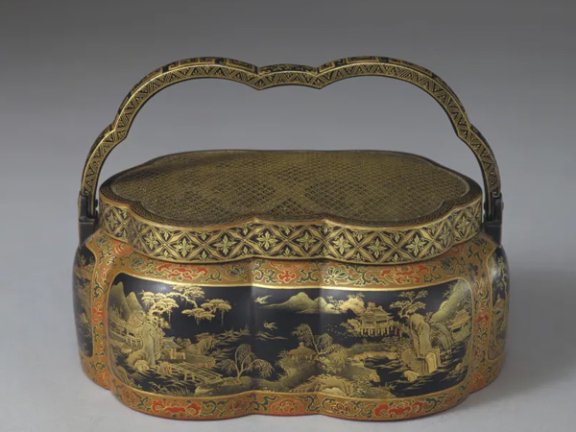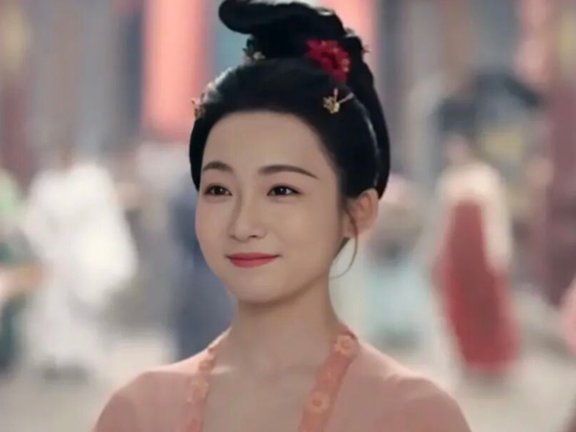-
Why Does Xu Lu's Cloak in The Vendetta of An Look So Odd?
A curious detail in the new historical drama The Vendetta of An (长安二十四计) has captured the audience's attention. In it, actress Xu Lu (徐璐), who portrays the character Bai Wan (白莞), wears a cloak with an unusual feature: a separate panel of fabric draped over its back. This double-layered design strikes many modern viewers as anachronistic or simply strange, prompting questions about its historical accuracy. Could a cloak really be constructed this way in ancient times, or is this a fanciful creation of the costume department? The answer lies not in creative license, but in a forgotten practicality shaped by climate and necessity. A Functional Design The additional back panel is not mere decoration. It functions as a rain guard or wind flap. Its primary purpose was to create a protected air space between itself and the wearer's back. When rain or sleet fell, it would hit this outer layer first. Following gravity, the moisture would then slide down the panel's surface and away from the body, keeping the inner cloak—and the crucial lower back and waist area—dry and insulated. This logic is enhanced when the cloak material itself is water-resistant. Historical garments often used oils, waxed fabrics, or inherently… -
The Royal Collar: How a Song Dynasty Neckpiece Ruled the Court
In the historical drama Serenade of Peaceful Joy (清平乐), a peculiar white neckpiece adorns the robes of officials, instantly capturing the modern viewer's eye. To contemporary audiences, it might resemble an odd fashion accessory or even a pet's collar. But this item, far from mere decoration, was a powerful instrument of state authority. Its correct name is the Fangxin Quling (方心曲领), and its story is one of rigid hierarchy, cosmic symbolism, and physical discipline within the imperial system. A Mark of Rank Not every official in the Song Dynasty could wear the Fangxin Quling. Its privilege was reserved by law for those of the seventh rank and above, specifically those entitled to wear a certain type of ceremonial undergarment. This regulation, documented in texts like the Book of Sui (隋书·礼仪志七), made it a clear, visual demarcation between high-ranking central bureaucrats and lower-level local magistrates. It was a badge of inclusion within the empire's most powerful administrative circle. This was not a Song invention. The collar's institutional origins can be traced back to the Sui and Tang dynasties, evolving from more complex ceremonial attire. The Song court fully standardized and codified its use, embedding it firmly within the formal court robe… -
The Forbidden City's Pearls: Why Are They So Irregular and Unique?
Visitors to the Forbidden City often pause before display cases, puzzled by the pearls adorning ancient artifacts. These pearls are rarely perfectly round; many are oval, lumpy, or asymmetrical. This immediately conflicts with modern expectations, where flawless, spherical pearls symbolize luxury. The immediate assumption might be that historical artisans used inferior materials, but the truth is far more compelling. These irregular pearls are not evidence of poor quality but are artifacts of a different world—a time when pearls were gifts of nature, not products of controlled cultivation. Their shapes tell a story of rarity, historical technology, and aesthetic values that prized natural form over engineered perfection. This exploration seeks to answer the central question and redefine what we consider "valuable" in historical context. Wild Pearl Formation Every irregular pearl in the imperial collection began its life in the wild. Unlike today's farmed gems, historical pearls formed entirely by chance within mollusks like oysters and mussels. When a minute irritant, such as a sand grain, entered the shellfish, the creature's mantle tissue responded by secreting layers of nacre around it. This process, called biomineralization, had no guiding template or fixed nucleus. The nacre deposited unevenly over years, resulting in organic, baroque… -
How Han Became a Cultural Marker
Have you ever wondered why we are called the Han people? What is the story behind this name that defines a civilization? A Name Forged in History The term "Han" finds its anchor in one of China's foundational dynasties. Following the brief but brutal Qin Dynasty, a power struggle erupted. Liu Bang (刘邦), a rebel leader, was granted the title "King of Han" after the region of Hanzhong (汉中). His advisor, Xiao He (萧何), saw profound meaning in this name. He connected it to "Tianhan (天汉)," a poetic ancient name for the Milky Way, arguing it signified majestic grandeur and celestial favor. When Liu Bang emerged victorious, founding a new era of stability and expansion, he adopted Han as the dynasty's name. This was no ordinary dynasty. Lasting over four centuries, the Han Dynasty solidified a centralized state, expanded its territory significantly, and established the Silk Road. Its administrative reforms, cultural achievements, and military strength created a powerful, enduring legacy. To people beyond its borders and to generations within, "Han" became synonymous with this powerful, sophisticated civilization. It was an identity marker long before modern ethnic concepts existed. Other powerful dynasties came and went, like the celebrated Tang. Yet while… -
Did Ancient Chinese Emperors Crave Summer Fruits Like We Do?
Today, our globalized world delivers tropical delights to distant continents, making seasonal or geographic limitations seem like a quaint concept. But for most of human history, the contents of a fruit bowl were strictly governed by what the local land offered each season. The journey of fruit in ancient China is not merely a tale of agriculture, but a captivating story of imperial desire, technological ingenuity, and the slow, patient weaving of trade routes that connected empires. It reveals a world where a single peach was a token of friendship, a grapevine was a treasured import, and the taste of a fresh lychee was a luxury worth extraordinary cost. Peaches and Plums In the primal forests and along the riverbanks of ancient China, the first fruits were those provided by nature untamed. Early peoples were careful foragers, observing which berries and nuts animals ate before deeming them safe. The foundational fruits of Chinese civilization emerged from this period: the peach, the plum, the jujube (or Chinese date), and the apricot. These are the fruits immortalized in the Book of Songs (诗经), their flavors often tart or astringent compared to modern varieties. These native species held deep cultural significance. The phrase… -
How Did Ancient Chinese Bathe?
Today, a shower involves stepping into a tiled space, reaching for brightly bottled gels, and enjoying instant lather. But in ancient China, from the dusty courts of the Zhou to the bustling markets of the Qing, bathing was a deliberate practice woven into the social and spiritual fabric. Without modern plumbing or chemistry, people turned to the earth and kitchen for solutions. This narrative isn't about mere cleanliness; it's about a cultural dedication to purity that evolved over millennia, using everything from grain runoff to animal organs. The story of their bathing rituals reveals a sophisticated, resourceful approach to personal care that rivals our own in ingenuity and intent. Bathing Rituals In ancient China, washing was codified. The classic text Book of Rites prescribed washing hair every three days and bathing the body every five. This was not a casual suggestion but a recognized standard for refinement and health. During the Han Dynasty, this principle was institutionalized for officials, who were granted a "rest and bath" day every fifth day to attend to personal hygiene. Such practices underscored that cleanliness was both a private duty and a public expectation. The language itself was precise. The act of cleansing was divided… -
Could You Survive at a Ming Dynasty Dinner Table?
Imagine stepping into a bustling street in 16th-century Nanjing. The air is thick with the sizzle of woks and the warm, yeasty smell of steamed buns. From the grand banquets of the scholar-elite to the simple, hearty meals of artisans, the Ming Dynasty was a golden age of Chinese gastronomy. It was an era where culinary traditions solidified, new ingredients whispered of distant lands, and the social ritual of eating reflected a vibrant, commercial society. This wasn't just about sustenance; it was a daily celebration of flavor, technique, and connection. The Staple Foundation The cornerstone of any meal was grain. A clear north-south divide existed: wheat reigned in the arid north, while rice dominated the watery south. Northerners enjoyed a stunning array of noodles, steamed buns, and flatbreads. Southern bowls were consistently filled with fluffy white rice or comforting congee. Interestingly, the New World crops we associate with China today—corn, sweet potato, potato—had arrived by late Ming. Yet, they remained curiosities or famine-relief foods for the poor. A Ming diner would stare blankly at a plate of french fries or a bowl of sweet potato noodles. Their staple world was built on ancient, familiar grains. Meat on the Menu If… -
Why Do Chinese People Show Less Interest in Dancing?
In the heart of ancient China, dance was not merely entertainment but a vibrant expression of life and culture, particularly during the Tang Dynasty. This era, known for its economic prosperity and cultural exchanges, saw dance flourish in ways that might surprise modern observers. Today, however, the lively dance floors of old seem a distant memory, leading many to wonder why such a rich tradition has faded. This article delves into the dynamic world of Tang dances, exploring their forms and the historical shifts that quieted their rhythms, offering a fresh perspective on a cultural evolution that resonates beyond time. Vibrant Jianwu Jianwu (健舞), or vigorous dance, epitomized the energy and strength of Tang performers, captivating audiences with its lively movements. This style included subtypes like Zhezhi (柘枝), which originated from Central Asia and featured solo female dancers moving to drumbeats in a blend of power and grace. Historical records, such as those in Yuefu Zalu (乐府杂录), highlight how these dances reflected the era's openness to foreign influences, with performers like Gongsun Daniang (公孙大娘) celebrated for their skill. Her performances, described in poetry, showcased a mastery that left a lasting impression on spectators, illustrating how Jianwu became a symbol of… -
The Yinji and the Ancient Chinese Philosophy of Slow Living
You have seen it in countless historical Chinese dramas, from The Story of Minglan (知否) to Nirvana in Fire (琅琊榜). A character, perhaps Shen Li (沈璃) from The Legend of Shen Li (与凤行), lounges gracefully, not on a chair, but on a piece of furniture that looks like a curved armrest. It seems incredibly comfortable, a perfect prop for scenes of scholarly contemplation or leisurely repose. But what is this object? It is not a chair at all. This is the Yinji (隐几), an ancient support that was the epitome of comfort and intellectual attitude for centuries of Chinese literati. More than just furniture, it was a portable sanctuary for relaxation and a symbol of a mindful approach to life. Not a Chair The Yinji, also known as a leaning stool or armrest, was a quintessential item in ancient Chinese interiors, particularly for use on a Ta (榻), a low platform bed. Its primary function was to provide support for the back, the arms, or even the side of the body. Imagine a portable sofa arm that could be placed wherever one desired a comfortable lean. It was designed for ease of movement, often light enough to be carried outdoors… -
How to Become a Female Official in Ming Dynasty?
What if you could bypass marriage and become a career woman in the Ming Dynasty? In an era dominated by the saying "a woman without talent is virtuous," the path for women was overwhelmingly prescribed: domestic confinement, learning needlework, and accepting an arranged marriage. Yet, a remarkable alternative existed behind the towering vermilion walls of the Forbidden City. The imperial palace offered a select group of women a chance to become female officials, known as Nüguan (女官). These were not mere servants but educated administrators who managed vast swathes of palace operations, from finances and rituals to education and security. This was a rare space for female agency within a rigidly patriarchal system. The Selection Becoming a Nüguan was an arduous process with intense competition. Candidates, typically aged between 13 and 20, had to meet stringent criteria. Their family background was scrutinized; they had to come from "good families"—often the daughters of low-ranking officials or commoners, but not from professions like medicine or commerce. This ensured their loyalty and prevented powerful clans from gaining internal influence. Physical appearance required dignity, not dazzling beauty, as these women would represent the imperial household. The evaluation of moral character was particularly severe. Local… -
How Did Ancient China Celebrate the Cold?
When winter's chill embraced ancient China, a unique sense of joy permeated the air. Unlike the vibrant energy of spring or the abundant harvests of autumn, the colder months offered a distinct pleasure. As snow blanketed the landscape in a pristine white, people found warmth and security indoors, their minds filled with delightful winter fantasies. What did they do to pass the time? The ancients left behind a legacy of elegant and amusing pastimes that transformed the season into a period of celebration and reflection. From dynamic sports on ice to quiet moments appreciating nature's beauty, their activities were both meaningful and joyful, providing a fascinating glimpse into a world where winter was not merely endured but enthusiastically welcomed. Ice Games Among the most popular winter sports was Bingxi (冰嬉), a term encompassing various ice activities. Records of these games date back to the Sui and Tang dynasties, but they truly flourished later. By the Ming dynasty, Bingxi had become part of military training, with a special office established to oversee it. The Qing dynasty marked the peak of these ancient ice sports. Emperors encouraged Bingxi to strengthen the Eight Banners army, believing it enhanced their physical prowess and combat… -
Why Don't Modern Chinese Men Grow Facial Hair?
In ancient China, a luxuriant beard was the ultimate symbol of masculine maturity and charm. Historical portraits and literary classics are filled with descriptions of venerable men distinguished by their impressive facial hair. Yet in contemporary China, from the bustling streets of Shanghai to the screens of popular television dramas, the bearded face has all but disappeared. This shift raises a compelling question about the evolution of male aesthetics. Why has a feature once so central to a man's identity fallen so dramatically out of favor? The answer lies at the intersection of changing beauty standards, media influence, and a fundamental redefinition of what constitutes male attractiveness today. Historical Significance For centuries, facial hair was far more than a simple biological trait; it was a powerful social signifier. In the hierarchy of classical aesthetics, a fine beard indicated wisdom, virility, and social standing. Historical texts and paintings consistently depict revered figures, from scholars to generals, adorned with beards. The legendary warrior Guan Yu (关羽), a central character in the Romance of the Three Kingdoms (三国演义), is famously remembered as the "Gentleman with the Beautiful Beard." His long, flowing beard was an integral part of his formidable and honorable image, a… -
Discover the Strangest Official Positions in Ancient Chinese History!
Ancient China's bureaucratic system was a vast and intricate network, filled with roles that might seem odd or mysterious to modern eyes. These positions, with their unique names and specialized duties, offer a glimpse into the political ingenuity of bygone eras. Far from being mere curiosities, they played vital parts in maintaining social order and supporting the imperial machinery. This article delves into four such fascinating jobs, revealing how they evolved and why they mattered. From tutors to crime-fighters, these officials shaped history in ways that still capture our imagination today. 1. The Taizi Xima (太子洗马) Imagine a job title that sounds like it involves scrubbing horses, but actually places you at the heart of imperial power. The Taizi Xima was exactly that—a high-ranking tutor and confidential secretary to the crown prince. Contrary to what the name suggests, this role had nothing to do with equine care. Instead, it focused on guiding the future ruler through education and state affairs. Originating in the Qin Dynasty, the title derived from a term meaning "pioneer," reflecting the official's duty to lead and advise. Holders of this position curated the prince's library, instructed him in classics, and accompanied him on journeys, building a… -
Did a Golden Slip Really Save an Empress's Life?
In the television series Strange Tales of Tang Dynasty Ⅲ: Chang'an ( 唐朝诡事录之长安), two officials are on a mission to locate a mysterious artifact—a golden slip. This object holds the key to unraveling a complex mystery. What many viewers might not realize is that this plot device is not merely a writer's invention. It is based on a real, historical treasure connected to one of China's most powerful rulers, Empress Wu Zetian (武则天). This gleaming piece of gold offers a tangible link to her reign, raising a compelling question: could this small object have truly held significance for the fate of an entire dynasty? The Golden Proof The prop in the show is a detailed replica of an actual artifact housed in the Henan Museum. This genuine Jin Jian (金简), or Golden Slip, measures 36.2 centimeters in length, 8 centimeters in width, and weighs 223.5 grams. Its gold content exceeds an impressive 96%. The surface is devoid of intricate patterns. Instead, its value lies in the sixty-three characters etched into the metal. These words form a personal plea from the Empress, asking the heavens to absolve her of her worldly sins. This slip remains the only known relic directly tied…- 0
- 0
- 32
-
How Chinese Wedding Traditions Adapt and Endure
In the heart of ancient China, a bride's journey to her new home was marked by a procession of carefully curated items, each telling a story of family love and societal expectations. From the bustling streets depicted in The Story of Minglan (知否知否应是绿肥红瘦) to the intricate details in Flourished Peony (国色芳华), dowries served as more than mere possessions; they were a woman's anchor in a world defined by marital bonds. These collections, often prepared from a daughter's birth, reflected deep cultural roots where marriage was not just a union but a strategic alignment of families. Parents invested years, sometimes even mortgaging properties, to assemble dowries that would ensure their daughter's dignity and security. This practice, steeped in tradition, highlighted the delicate balance between affection and social standing, weaving a tapestry of hope and responsibility that transcended generations. Dowry Components Ancient Chinese dowries were meticulously divided into practical and symbolic categories, tailored to a family's means. For ordinary households, items like beds, chests, quilts, and pillows formed the core, as seen in historical records and dramas such as The Story of Minglan. These objects, though simple, embodied parental devotion, with families often measuring the groom's home beforehand to customize furniture. In… -
What Did Song Dynasty Elites Wear to Beat the Cold?
As winter winds sweep through modern cities, it is natural to wonder how people in ancient times managed without today's heating systems. The image of historical figures in flowing robes during chilly months might seem illogical, but ancient Chinese developed sophisticated methods to stay warm. This article delves into the innovative clothing and accessories used in dynasties like the Song, revealing how elegance and practicality coexisted in winter wear. From layered garments to insulated accessories, their approaches offer a fascinating glimpse into daily life centuries ago. Layered Clothing In ancient China, people relied on multi-layered garments similar to modern jackets. One key example is the Jia Yi (裌衣), an insulated outer robe designed for cooler seasons. It typically consisted of an outer shell and an inner lining, with padding materials sandwiched in between. This design allowed for flexibility and warmth, much like today's quilted coats. Historical texts, such as poems by Su Shi (苏轼), reference these items, showing their importance in daily life. For instance, in his work Chu Qiu Ji Zi You (初秋寄子由), he describes how putting on a Jia Yi provided comfort as temperatures dropped, highlighting its role in autumn and winter. Archaeological finds support the use of… -
The Story of Song Pearl Makeup’s Diversity
Why Did Pearl Makeup Styles Vary So Greatly in the Song Dynasty? From royal portraits to modern television dramas, the distinctive Zhenzhu Zhuang (珍珠妆), or pearl makeup, has become an iconic representation of Song Dynasty aesthetics. This facial adornment, featuring pearls strategically placed on the face, appears in countless historical productions and contemporary Hanfu fashion. Yet observers quickly notice puzzling differences: some wearers display sparse clusters of pearls, while others boast lavish arrangements covering entire cheekbones. What accounts for this dramatic variation in application and quantity? The answer reveals a fascinating narrative about personal expression, economic status, and cultural practices that transcended rigid social hierarchies. Social Statements Contrary to popular assumption, pearl placement and quantity never reflected official rank or marital status during the Song period. While court regulations meticulously dictated dragon and phoenix motifs on formal headdresses to indicate hierarchy, no edict governed facial pearls. The widespread belief that lower-status individuals wore fewer pearls represents a modern misinterpretation. Historical evidence confirms that pearl adornment functioned as what we might call democratic fashion—accessible in theory to anyone who could acquire pearls, though practical limitations naturally applied. The face offers limited real estate for decoration, with preferred positions including the forehead… -
The Hidden Beauty of White in Traditional Chinese Attire
When we think of white in traditional Chinese context, many immediately associate it with mourning and funerals. This common belief often leads to misunderstandings when seeing characters in historical dramas dressed in pristine white garments. However, white's role in Chinese sartorial history is far more nuanced and vibrant than mere symbolism of loss. From scholars expressing integrity to nobility showcasing elegance, white has woven itself into the fabric of daily life across dynasties. This article delves into the multifaceted journey of white clothing, challenging modern perceptions and revealing how this hue defined aesthetics beyond somber occasions. Historical White In the Ming Dynasty, white was a staple in wardrobes, especially among the elite. Women often wore Bai Ling Ao (白绫袄), a white silk jacket, during festive events like lantern festivals. These garments were not signs of grief but statements of sophistication. The natural whites used, such as Yu Du Bai (鱼肚白) or Yue Bai (月白), derived from organic dyes, offered a soft glow that complemented the surroundings. Unlike today's stark industrial whites, these tones blended seamlessly with moonlit nights and colorful lanterns, enhancing the wearer's grace without overpowering the scene. White also served practical purposes in everyday attire. It was commonly… -
Is That Snow White in Tang Dynasty China?
When viewers tuned into the historical drama Strange Tales of Tang Dynasty Ⅲ: Chang'an (唐朝诡事录之长安), a vibrant discussion erupted across social media platforms. The focus was not on the plot, but on the costume of a central character, Princess. Her gown, particularly its distinctive collar, bore a striking resemblance to the iconic outfit worn by Snow White from Western animation. This visual parallel prompted a wave of questions: Was this a deliberate borrowing from Disney? Does this design have any authentic roots in Chinese historical clothing, or is it a modern fabrication? The conversation highlights a larger, ongoing debate about how contemporary media interprets and represents historical fashion, blending fact with creative liberty. This costume controversy serves as a fascinating gateway into examining the intricate dialogue between Eastern and Western aesthetic traditions, and how ancient styles are reimagined for modern screens. Historical Inspirations To understand the princess's attire, one must look back at artifacts from the Tang Dynasty. Archaeological finds, such as ceramic dance figurines, reveal costumes with open necklines, often described as a U-shape or exposed collar. These garments, specifically used for performance, allowed for greater freedom of movement and an ethereal, flowing silhouette. The design typically involved layered…- 0
- 0
- 50
-
How Did Ancient People Survive Winter Without Heaters or AC?
As temperatures drop each year, modern solutions like electric blankets and smart thermostats become essential. But centuries before central heating, people across China developed remarkably sophisticated methods to stay warm. Their innovations blended architectural genius with portable comfort, creating systems that heated entire homes or provided personal warmth during bitter winters. These weren't just practical solutions—they represented a deep understanding of materials, heat conduction, and seasonal adaptation. From permanent structures built into homes to delicate artifacts carried in sleeves, each invention tells a story of human ingenuity facing nature's challenges. Heated Architecture The Kang (炕) heated bed was northern China's architectural answer to winter. Constructed from brick or adobe, this platform contained an intricate network of flues connecting to the household stove. Heat and smoke from cooking would circulate beneath the sleeping surface before exiting through a chimney. This clever design provided whole-room heating without extra fuel. The system appears in historical dramas like Flourished Peony (国色芳华), where characters enjoy its steady warmth. Wealthier households and palaces developed even more advanced systems. During the Ming and Qing dynasties, the Forbidden City utilized underground heating channels beneath its most important halls. Servants would light fires in outdoor stoves, with hot air…- 0
- 0
- 54
-
Cute Face vs. Imperial Aura in Wu Zetian’s Portrayal
Does a cute face truly fit the legendary Empress we know? The recent television series Strange Tales of Tang Dynasty Ⅲ: Chang'an (唐朝诡事录之长安) has sparked fervent discussion with its portrayal of a young Wu Zetian (武则天). Viewers expressed disbelief, questioning how the formidable female emperor could be depicted with such a soft, almost doll-like appearance. This portrayal clashes with the widely accepted historical image of a woman possessing a square forehead and broad cheeks, features believed to signify great ambition and power. The debate goes beyond mere acting, touching upon a deeper question: how should contemporary media represent formidable historical figures, especially women whose authority defied traditional norms? Historical Face What did Wu Zetian actually look like? Historical records, notably the New Book of Tang (新唐书), describe her with the term "Fang E Guang Yi" (方额广颐), meaning a square forehead and wide jawline. This was considered an auspicious physiognomy, predicting nobility and strength. Her own daughter, Princess Taiping (太平公主), was said to share these features, leading Wu Zetian to remark that she resembled her. This historical description presents a stark contrast to the delicate, "moe" style favored in some modern interpretations. This established image has been powerfully brought to life…- 0
- 0
- 47
-
4 Secrets Enable Ancient Chinese Explorers’ Sea Mastery
Imagine a time when the sky was your only map, and the sun and stars your guiding lights. Long before the magnetic compass pointed the way, ancient people relied on nature's cues to navigate their world. The sun rose in the east and set in the west; at night, the North Star marked true north, while lush tree growth often indicated south. But what happened on cloudy days when these signs vanished? Direction became a guessing game until a groundbreaking invention changed everything. The compass, born from human ingenuity, transformed exploration and trade, enabling journeys across vast oceans and uncharted lands. This is the story of how ancient Chinese innovators turned magnetic rocks into precise tools that shaped history, evolving from simple instruments to sophisticated devices that never lost their way. 1. Si Nan (司南) The Si Nan, often called the ancestor of the modern compass, emerged during the Warring States period. It consisted of a magnetic spoon carved from lodestone and a bronze plate engraved with directional symbols. When placed on the smooth surface, the spoon would spin freely and settle with its handle pointing south. This device leveraged the Earth's magnetic field, though its bulk and sensitivity limited… -
What Were the Must-Have Bags in Ancient Chinese Society?
In ancient China, where garments rarely featured pockets, bags became essential companions for daily life and travel. These accessories were far more than mere containers; they evolved into symbols of status, practicality, and even fashion across different dynasties. From the earliest recorded uses in the Zhou Dynasty, bags were tailored to specific needs, reflecting social hierarchies and cultural shifts. This exploration delves into how these items transformed from simple carryalls into intricate expressions of identity and style, showcasing the ingenuity of ancient craftsmanship. Early Forms During the Pre-Qin period, people already relied on bags for transporting goods, as noted in the Book of Songs. Texts describe two main types: the small Tuo (橐) and the larger Nang (囊), used for carrying food and supplies during journeys or military campaigns. These early designs emphasized functionality, with materials and sizes adapted to nomadic and agricultural lifestyles. As societies stabilized, bags began to serve broader purposes, laying the foundation for more specialized versions in subsequent eras. By the Han Dynasty, a square bag called the Shounang (绶囊) emerged, primarily holding official seals and documents. Bestowed by emperors upon officials, it became a mark of rank and authority. Historical records like the Song Shu… -
Did Ancient China Host the World's Most Poetic Parties?
Modern holidays come with familiar routines, but ancient Chinese celebrations wove together deeper threads of romance, artistry, and community. Beyond the well-known dragon boats and mooncakes lies a forgotten calendar of occasions where young lovers sought fate, poets found inspiration in floating cups, and villages erupted in gratitude for the earth's bounty. These were not mere dates on a calendar; they were vibrant, participatory events that gave form to human hopes and connections. Let's step back into a world where seasonal rhythms dictated social life and discover the captivating customs that once defined the year's turning points. Knotting Wishes In the crisp air following the Lantern Festival, a unique ritual unfolded in northern households. Unmarried young women would take strips of colorful silk or even old almanac paper, meticulously knotting them together into a long, connected chain. This practice, known as Jie Yangchang (结羊肠), was a physical manifestation of their deepest desires. Each knot represented a silent prayer, a hope that their own romantic paths would be smooth and lead to a fortunate union. The process was both a personal meditation and a social activity. With focused intention, they would intertwine the separate strands, their private thoughts and aspirations weaving…
❯
Profile
Check-in
Message
Message
Search
Contact Us
Scan to open current page
Top
Checking in, please wait
Click for today's check-in bonus!
You have earned {{mission.data.mission.credit}} points today!
My Coupons
-
$CouponsLimitation of use:Expired and UnavailableLimitation of use:
before
Limitation of use:Permanently ValidCoupon ID:×Available for the following products: Available for the following products categories: Unrestricted use:For all products
No available coupons
Daily tasks completed:


